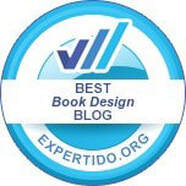|
Finishing a manuscript is one of the most rewarding achievements for any writer, but once you are at this stage, what’s next? You may have spent many weeks, months and even years in composing your book, but that was only the beginning, getting it published and successfully published that is, can be a daunting challenge for anyone, even if this isn’t your first time. So, here are nine steps that you should consider once you’ve typed ‘The End’ on your manuscript: One - Editing and Revision: Before submitting the manuscript to publishers (traditional or self-publishing upload), it is essential to edit and revise it thoroughly. This includes checking for grammar and spelling errors, refining the plot and characters, and ensuring the overall coherence and flow of the story. If you want to do this yourself, put the book down and give it a couple of weeks before you review it, getting some distance can help you to look at it again with fresh eyes, and there are plenty of software options to help you do this. But it must be said, getting a professional to edit your book is a far better option and usually leads to better results in polishing your book. Two - Beta Readers and Feedback:
Consider sharing the manuscript with a select group of trusted beta readers. These individuals can provide valuable feedback and insights regarding the strengths and weaknesses of the book, helping the author make further improvements. You can choose a group of trusted friends or family, but remember, these people are not normally as subjective as someone who may not be that close to you, so it pays to be selective in who beta reads your book. Three - Literary Agent (Optional): While not mandatory, authors may choose to seek representation from a literary agent. A literary agent acts as a professional intermediary between the author and publishers, helping to negotiate contracts, secure publishing deals, and provide guidance throughout the process. Having an agent to represent your book can be a crucial foot in the door for most authors, as most big publishers will only look at new manuscripts that come to them via an agent, and not unsolicited ones sent to their mailbox/inbox. Four - Research Publishers: Authors should research potential publishers who specialize in their genre or subject matter. Look for publishers who have published similar books and have a good reputation. Take note of their submission guidelines and requirements. It also helps to get a copy of Jeff Herman’s guide to Book Publishers, Editors & Literary Agents, this is updated yearly and gives you vital information for publishing your book and details for lots of relevant people within the publishing world. Five - Query Letter and Book Proposal: If you are going down the traditional route, you should write a compelling query letter addressed to the appropriate editor or publisher. The query letter is a brief introduction to the book, including a synopsis, author biography, and any relevant writing credentials. In some cases, publishers may also request a book proposal, which provides a more detailed overview of the book, its target audience, marketing strategies, and comparative titles. You can see a great example of this along with a template at Book Proposal + Book Proposal Template by Jane Friedman. Six - Submitting to Publishers: Follow the submission guidelines provided by each publisher. Some may request electronic submissions, while others prefer printed manuscripts. Ensure all required materials are included and send the submission to the appropriate person or department. Seven - Patience and Persistence: It's important to remember that the publishing process can be lengthy and highly competitive. Rejections are common, and authors should be prepared for this. Remain patient and continue submitting to multiple publishers while also considering feedback received from rejections. Eight - Signing with a publisher: Contract Negotiation: If a publisher expresses interest in publishing the book, they will typically offer a publishing contract. Carefully review the contract terms, including royalty rates, advances, rights, and any other relevant clauses. Seek legal advice if necessary to ensure a fair and favorable agreement.
Nine - Self Publishing With your book edited, proofread, and any re-writes complete (and double checked) the next step is to choose your print on demand publisher. Self-publishing platforms generally distribute books to major online retailers, making your book available on platforms like Amazon, Barnes & Noble, and Apple Books, they also allow you to print hard copies for your own events and distribution (if doing so).
Remember, the publishing journey can vary depending on individual circumstances and the publishing route chosen, such as traditional publishing or self-publishing. Each path has its own nuances and requirements, so you should adapt their approach accordingly.
0 Comments
Your comment will be posted after it is approved.
Leave a Reply. |
JD&JCategories
All
Archives
July 2024
All information within this website (including its blog) is published in good faith and for general information purposes only. JD&J Design LLC does not make any warranties about the reliability and accuracy of this information. Any action you take upon the information in this website is strictly at your own risk. JD&J Design LLC is not liable for any losses and/or damages in connection with the use of this site and information.
|




